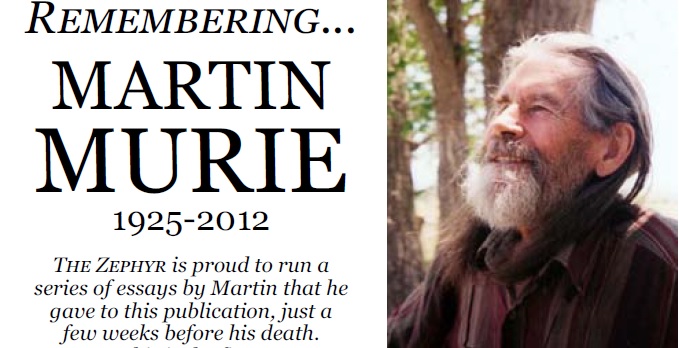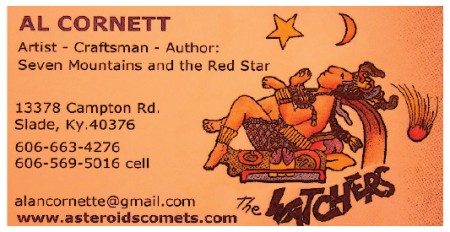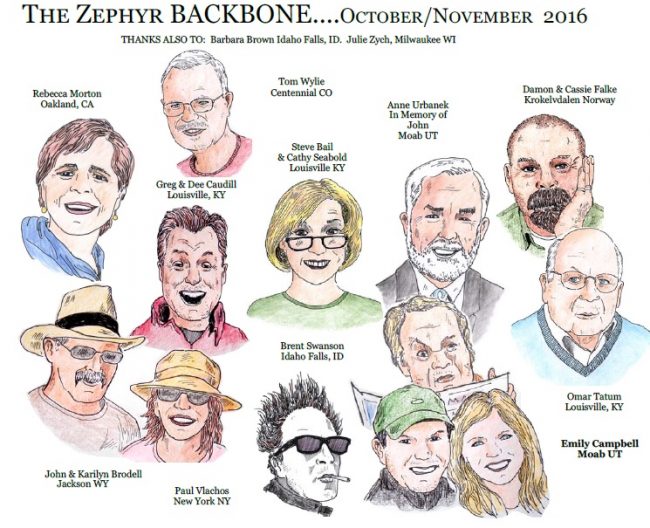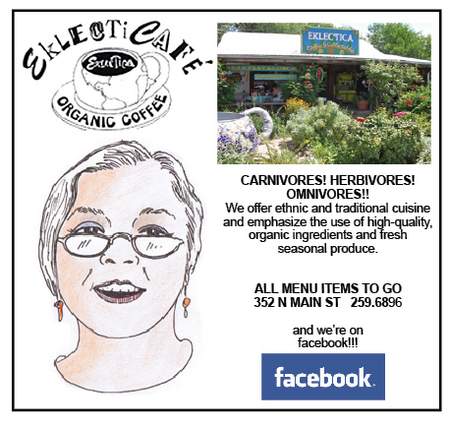The froggers would arrive in the mornings, having driven from their night hunt in California’s Central Valley wetlands, bullfrog country. They’d carry wet burlap bags full of live frogs into the streetside building, talk for a while, take their pay in cash and disappear.
My boss tried to keep frog transactions as well as all other visits confined to the front office. In a roundabout way he let me know how important it was to keep prying eyes away from the bullfrog prep room adjacent to my formaldehyde-reeking lab. Nearly all bullfrogs went into that prep room alive and clean and emerged as skinned carcasses, neatly packaged in waxed paper-lined cardboard boxes, bound for gourmet eateries in San Francisco. We sometimes had calls for preserved bullfrogs from colleges and high school classrooms, but that trade was usually satisfied with leopard frogs from the upper Midwest.
Don’t get the wrong idea. The restaurant prep room was kept spick-and-span and we always cleaned up before entering; but there was that nagging question: what might the health inspector think?
It was the mid-fifties, Cold War, and McCarthyism. I was thirty years old with a family and had turned down a teaching assistant job at U.C. Berkeley to protest the state’s loyalty oath. Those who refused to sign the loyalty oath, and there were more than a few of us, were not only denied state-financed jobs, but were made to feel on the wrong side in the Cold War: outlaws. Sound familiar?
So, I began serious study of want ads and found a request from a company that supplied animal and plant specimens to educational institutions. I applied and was tested on freshly killed Necturus, thick-bodied salamanders about 10 to 12 inches in length, with fluffy external gills, grayish to brownish in color and spotted in black. Beautiful animals, called mud puppies in northern states, waterdogs further south. I was given a quick demonstration: Using a syringe and fine needle, find the hepatic portal system (veins from gut to liver), inject yellow liquid latex. I managed to do it and was hired.
Day by day I learned new tasks, one of which had no relation to biological supplies, the making of embalming fluid for “the trade that’s slow, but steady.” In a 55-gallon drum mix water, formaldehyde, methanol, a strong acid and a secret ingredient. Top off with one tablespoon of concentrated rose petal oil. Bottle and label.
My lab was in a big steel building that housed a treasure trove of bodies, including dozens — generally well over a hundred — of embalmed cats stacked like cordwood. I took a woodcutter’s pride in that stack of cats (from San Francisco’s municipal merciful killing service). I had embalmed every one with formaldehyde, had injected the venous system with blue latex and the arteries with red. Some of them were “triples,” hepatic portal in yellow. Usually I was ahead of orders on embalmed rats, some of them “plain,” no injections, some single-injected (red arteries). Leopard frog singles were shipped out as fast as I could prepare them. Lonesome work back there in the lab. The radio helped. Even soaps moved the day along.
We had preserved sharks (bought from San Francisco fishermen), up to two feet long, stored in plastic bags. We had Necturus. We had fetal pigs, plain or single injected. We had drums full of preserved starfish, and gallon jars of crayfish. We had sheep brains laboriously chipped from stubborn skulls.
Another building housed live critters: Amoebas and Paramecia. In the front building (office, packaging, shipping) were shelves of microscope slides (chick and frog embryo developmental sequences, plant and animal tissue cross sections and whole mounts), and dry specimens such as human skulls and bones. Just about anything biological could be obtained from our establishment. If we didn’t have it in stock we’d find it.
A group of froggers arrived one morning while my boss had some urgent phoning to tend to. By then I had had casual contact with froggers and knew I should go easy on my inquisitiveness because the burlap bags brought into the front building held far more than the state’s bullfrog legal limit, and I knew that there had been run-ins with sheriffs. The froggers, waiting, the boss still on the phone, drifted into my lab. When the three men and a woman showed up I welcomed them, hoped they would stay a while.
They did. I went on with my work, answering their few questions, letting my hands do most of the talking, working with scalpel, syringe, needle, latex, and a deadly poison in a bottle that cleared congealed latex from needles. The froggers watched with genuine curiosity, but they were also casing the joint: equipment, crocks and bottles, doorway that opened on the embalmed cat and rat storage room.
Looking back on that day, I see that the froggers and I, and my boss too, had in common an engagement in a business that turned animals into commodities. Yes, but I have to add that in our various ways we had to pay close attention to the precise nature of each animal we hunted, processed, or killed; it was painstaking work. The animals were in our lives, they were not abstractions or sentimental reveries. They were flesh and blood, like us.
It wasn’t long before the four froggers began to talk about themselves, bragging a bit, artfully, the kind of tellings where a few nudges of artifice are permissible. They told me of a visit to a San Francisco music instrument store where they let on they were interested in buying a piano. They had, of course, no such intention. The star of the tale was the stocky happy-looking frogger standing nearest me, complacently allowing the other men and the woman take turns with the story. He, hands on keyboard and playing by ear, had gotten that store hopping. Everybody, including legit customers, had a good time. And I was as happy as can be while my hands stayed busy. We were all happy, celebrating the man who purloined time at the keyboard and gave it away free.
Marginal characters, the froggers, but with an eye for the main chance. I learned that one of them had invented an improved door latch for vehicles. One of the big three auto corporations had offered to buy the rights, but that stubborn frogger was holding back, thinking he might build his own company. He had this dream of sending his son to medical school.
Later, in another life, reading Steinbeck’s Cannery Row was like another visit to the froggers I had 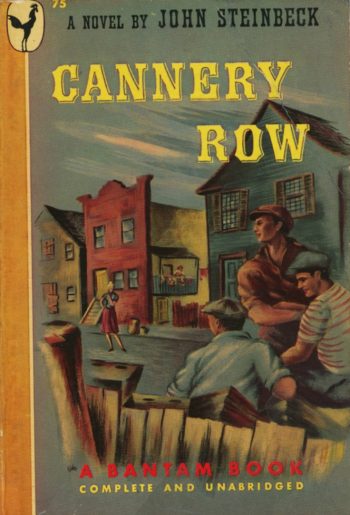 known. Steinbeck caught that quiet alertness and careful living on the margins, minute by minute, day by day: Mack, master of discourse, negotiating a complicated deal with Lee Chong, twenty five frogs to the dollar and the dollars to be spent in Lee’s own store. And he, soft-soaping the lonely land owner on whose land they had trespassed, praised his dog, found a tick wound to treat. The landowner, recognizing a kind of freedom he had never known, found a keg of bootleg whiskey in his cellar. A party ensued. And Gay, the man with the knowing touch on machines, who got the old Model T truck on the road again. And Eddie, who worked as a temp in a bar and didn’t allow any customer’s abandoned drink go to waste. And Hazel, a man who loved to listen to talk, the flow of it. Skills and attitudes serving two great aims of life: survival and enjoyment. Steinbeck wrote that Mack and his comrades “approached contentment casually, quietly and absorbed it gradually.”
known. Steinbeck caught that quiet alertness and careful living on the margins, minute by minute, day by day: Mack, master of discourse, negotiating a complicated deal with Lee Chong, twenty five frogs to the dollar and the dollars to be spent in Lee’s own store. And he, soft-soaping the lonely land owner on whose land they had trespassed, praised his dog, found a tick wound to treat. The landowner, recognizing a kind of freedom he had never known, found a keg of bootleg whiskey in his cellar. A party ensued. And Gay, the man with the knowing touch on machines, who got the old Model T truck on the road again. And Eddie, who worked as a temp in a bar and didn’t allow any customer’s abandoned drink go to waste. And Hazel, a man who loved to listen to talk, the flow of it. Skills and attitudes serving two great aims of life: survival and enjoyment. Steinbeck wrote that Mack and his comrades “approached contentment casually, quietly and absorbed it gradually.”
My boss had known Doc, aka Ed Ricketts, down there in Monterey. He and Doc had tinkered with the idea of merging their two bio supply businesses, the incubi of their lives, to build for themselves a more profitable and leisurely way of life. But they backed off; they were too different.
Bullfrogs are exotics in California, introduced around 1905. I considered them as perfectly naturalized inhabitants in their new paradise. And I thought of the froggers as just one more species of predator alongside the others: fish, herons, raccoons, and whoever else makes a good part of their living from prolific batrachians. None of those predators spray poison on Central Valley crops or farm workers.
The froggers and I were hands-on workers in our respective niches. Their urgent task was to catch and deliver frogs alive and in good health, but it wasn’t easy. Skills had to be acquired. I was in the same fix, struggling to be a “preparator.” Froggers learned ways of avoiding the sheriff and catching frogs in big quantities. I learned how to find things in the complex anatomy of animals. They were hunters who knew something about the hunted. And they knew the territory.
Our dear friend Martin Murie died in 2012.
To read the PDF version of this article, click here.
To comment, scroll to the bottom of the page.
Don’t forget the Zephyr ads! All links are hot!

